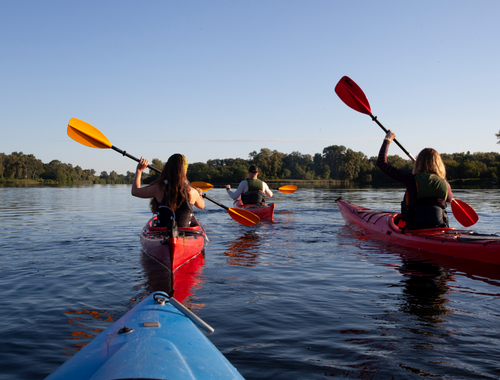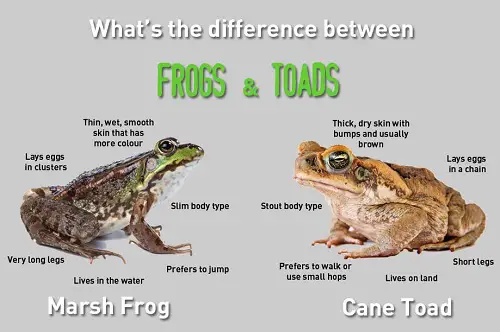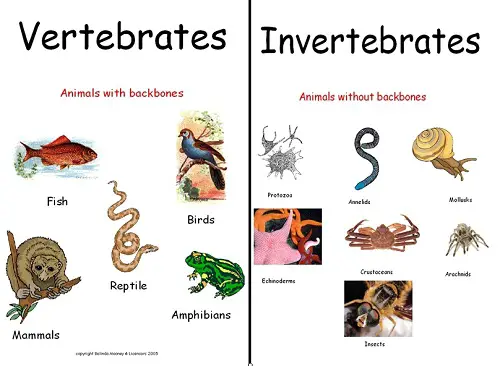Choosing the proper gear is essential to venture onto the open ocean. The process of choosing your equipment can be intimidating for a newbie. You might see little distinction between a canoe and a kayak.
Nevertheless, depending on your demands and circumstances, there are enough differences to impact you. Although canoes and kayaks have many notable distinctions, they also have certain similarities.

What is a Kayak?
A kayak is a kind of boat used by a small number of people at once, frequently just one person. In a Kayak, the rower sits on a closed deck, with their legs in front of them, and uses the double-ended paddle to move forward and backward over the water.
In Alaska, Canada, and Greenland, Inuit tribes are where kayaks first appeared. They were typically fashioned of wood for hunting purposes and covered in seal skin for the closed top. Later, Scandinavian adventurers took up kayaking and made the sport famous throughout Europe.
Kayaks are typically much smaller than canoes. A kayak’s body is smaller than a canoe’s, and the top is covered to keep water out. Kayaks can roll over and flip upside down. When a kayak goes upside down while someone is inside, the person can use their paddle to turn it back upright. The ends of the kayak paddle are made of wide, flat slabs of wood. The middle of the paddle is where the hands go first while a person is steering a kayak.
As kayaks are typically used in sports and water events, multiple people assume kayaks to be sporting equipment. Many different types of kayaks are available on the market, and they vary in design based on their intended use. Kayaks are generically grouped into three main categories ocean kayaks, fishing kayaks, and surf play kayaks.

What is a Canoe?
A canoe is a compact, slender boat with pointed ends. Although modern canoes can be equipped with outboard engines or oars, traditionally, a canoe is pushed and navigated by a person seated facing the direction of movement with a single-bladed paddle. Canoes come in a variety of designs that are suited to various environments and uses. For example, the rower uses a single-bladed paddle to move the canoe forward on the water while sitting or kneeling inside. Canoes feature an open-top construction.
The Carib kenu (dugout), from the Spanish “canoa,” is where the term “canoe” originates. A canoe, especially one made from a hollowed-out wood trunk, is still frequently referred to as a “dugout canoe.”
The Pesse canoe, which was uncovered in the Netherlands and dated back to 8200 BC, is the oldest boat ever found. Not only is this the oldest canoe in existence, but it’s also the oldest boat ever discovered.
The canoe has a long, slender shape with pointy ends. Canoes are around 5 meters long and 25 kg in weight. Those on the water use paddles to steer through it. Therefore one paddle or oar is needed. Only one end of the canoe paddle’s long handle is a large, flat piece of wood. The person in the canoe moves ahead by holding onto one end of the paddle and dipping the oar into the water on one side of the boat. He paddles on one side of the canoe until he wishes to shift course. The paddle will then be removed from the water and lowered into the water on the other side of the canoe.
Similarities
Forms of Transportation on Water
The canoe and kayak, one of the earliest types of watercraft, is a small, light boat that is often paddled to move it forward and direct it. Canoes can move quickly in both deep and shallow water due to their pointed ends and curved sides. On small bodies of water, kayaks are most frequently utilized for recreational activities.
Lightweight, Small Boats
Kayaks are strong, light, portable, and, most importantly, they are ideal for fishing. A canoe is also a lightweight, narrow watercraft with pointed ends and an open top driven by one or more paddlers kneeling or sitting and facing forward while holding a single-bladed paddle.
Powered by The Person Sitting
Canoes and kayaks are examples of boats defined as small water vessels, typically open to the elements and powered by wind, mechanical, or human power.
FAQ:
What is the difference between a kayak and a canoe?
A canoe is an open-deck watercraft, and a kayak is a closed-deck boat. A canoe is with a one-bladed paddle and a sitting or kneeling rowing position, while a kayak is with a double-bladed paddle and a sitting position, with the legs, stretched out. Kayaks are generally made to be faster and more maneuverable as they are lighter and smaller than canoes.
Which is easier, kayak or canoe?
Canoeing is harder than kayaking if you’re a beginner paddler. But that in no way implies that you shouldn’t give canoeing a shot.
Is a canoe safer than a kayak?
Kayaks are safer on rougher, choppier waters, while canoes are safer on calmer waters. Canoes are less likely to tip over but are also harder to the right. Although kayaks are more prone to flip over, they are also simpler to self-rescue.
Is a kayak a type of canoe?
A kayak is not a type of canoe, as they both are built differently and have different paddles. Kayak paddlers often use a double-bladed paddle, while canoeists typically use a single blade.
Do Brits call a kayak a canoe?
The word “canoe” in British English can also refer to a kayak, albeit to distinguish them from kayaks, canoes are referred to as Canadian or open canoes. Around the world, several societies created canoes, some of which had sails or outriggers.
What are the four categories of kayak and canoe?
Kayaks and canoes can be a river, leisure, whitewater, racing, or fishing craft.












Leave a Reply